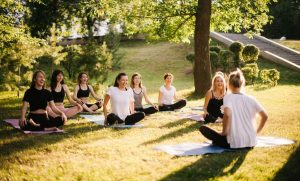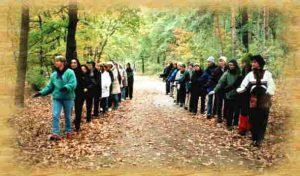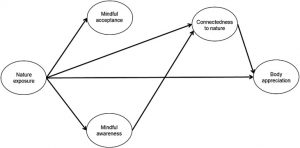Mindfulness Levels are Associated with Different Leisure Activities
By John M. de Castro, Ph.D.
“we see an increasing amount of people in all sectors of life exploring ways to become more grounded through yoga, diet, and mindfulness. This yearning is making its way into our homes as many of us have searched for practices and experiences to slow down and bring more connection into our family life as well.“ – Elisha Goldstein
We strive for success and achievement. We work for years to attain an academic degree that we can place on our resume and use as the basis for the next entries on our resume revolving around our career. We measure our success by our titles and the wealth we accumulate. Striving to do well in life and make a comfortable living are good things. They can, of course, become a problem when they are overemphasized and become the predominant focus in our lives to the exclusion of the other aspects of life that are the true source of happiness and satisfaction. Mindfulness can help but the relationship of mindfulness to other activities in our lives have not been well explored.
In today’s Research News article “Associations between Leisure Preferences, Mindfulness, Psychological Capital, and Life Satisfaction.” (See summary below or view the full text of the study at: https://www.ncbi.nlm.nih.gov/pmc/articles/PMC8998282/ ) Dirzyte and colleagues recruited healthy adults and had them complete measures of satisfaction with life, psychological capital, mindfulness, and leisure preferences including “watching television”, “book reading”, “spending time in nature”, “spending time with family”, “spending time with friends”, “participating in events”, “going to meditation/yoga classes”, and “other”.
They found that not watching television and spending time with family during free time was associated with higher levels of mindfulness, life satisfaction, and psychological capital. For males, life satisfaction was associated with time spent in nature, mindfulness was associated with book reading, while psychological capital was associated with spending time with family. For females, life satisfaction was associated with spending time with family, mindfulness was associated with not watching television, while psychological capital was associated with spending time with family, participating in events, and spending time in nature.
These results are correlational and no inferences about causation can be made. But it is clear that the association of mindfulness and life satisfaction with leisure activities is complex. different for men and women, and not watching television and spending time with family appear to be particularly improtant.
“see if you can simplify your life in certain ways. If you fill up all your time, you won’t have any. Simplifying may mean prioritizing the things that you have to versus what you want to do. “ – Integrated Stress Management
CMCS – Center for Mindfulness and Contemplative Studies
This and other Contemplative Studies posts are also available on Twitter @MindfulResearch
Study Summary
Dirzyte, A., Patapas, A., & Perminas, A. (2022). Associations between Leisure Preferences, Mindfulness, Psychological Capital, and Life Satisfaction. International journal of environmental research and public health, 19(7), 4121. https://doi.org/10.3390/ijerph19074121
Abstract
This study intended to explore which leisure preferences contribute to mindfulness, psychological capital, and life satisfaction and assess whether mindfulness, psychological capital, and life satisfaction are associated with different leisure preferences. This study applied the Satisfaction with Life Scale (SWLS), the Psychological Capital Questionnaire (PCQ-12), the Mindful Attention Awareness Scale (MAAS), and the instrument to evaluate the prevalence of leisure preferences. A sample consisted of 586 participants, 104 males and 478 females. The mean age of participants was 42.06, SD = 13.29. The results show that respondents who did not spend free time watching television scored higher on life satisfaction, mindfulness, and psychological capital. Participants who preferred attending events scored higher on life satisfaction and psychological capital. Participants who preferred spending time with family as a leisure preference scored significantly higher on life satisfaction, mindfulness, and psychological capital, including PsyCap overall, PsyCap work, PsyCap relationship, and PsyCap health. The findings also reveal that time spent with family is significantly associated with life satisfaction. Besides, males’ life satisfaction was significantly associated with time spent in nature, while females’ satisfaction was associated with spending time with family and participating in events. Males’ mindfulness was significantly associated with book reading, and females’ mindfulness was associated with not watching television. Males’ psychological capital was significantly associated with spending time with family and book reading, and females’ psychological capital was associated with not watching television but spending time with family, participating in events, and spending time in nature. The findings also showed that mindfulness mediated the link between watching television and life satisfaction, and psychological capital mediated links between spending time with family, participating in events, and life satisfaction. The findings demonstrate that life satisfaction is also significantly associated with spending time with family as a leisure preference. This study also revealed a significant negative association between age and spending time with friends or family, evidencing the possible loneliness of elderly respondents. Due to limitations of this study, including sample size and characteristics, cultural context, and research design, the research findings would preferably be regarded thoughtfully.
https://www.ncbi.nlm.nih.gov/pmc/articles/PMC8998282/








